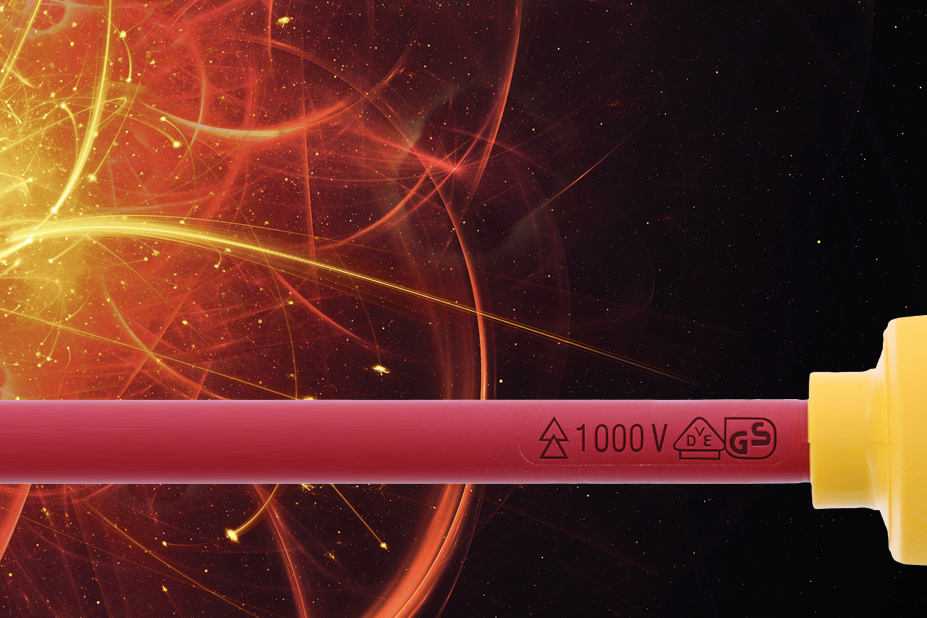ARC FLASH
An Arc Flash is an electrical explosion due to a fault condition or short circuit when either a phase to ground or phase to phase conductor is connected. Arc flashes cause electrical equipment to explode, resulting in an arc-plasma fireball.
Temperatures may exceed 35,000° F (the surface of the sun is 9,000° F). These high temperatures cause rapid heating of surrounding air and extreme pressures, resulting in an arc blast. The arc blast will likely vaporize all solid copper conductors which will expand up to 67,000 times its original volume. The result of this violent event is usually the destruction of equipment, fire, and severe injury or death to anyone nearby.
WHY ARC FLASHES HAPPEN
There are a variety of reasons why an Arc Flash may occur, but most of them are preventable. Most arc flashes occur when maintenance workers are manipulating live equipment for testing or repair and accidentally cause a fault. Improper tools, improper electrical equipment, corrosion of equipment, improper work techniques, and lack of training are just some of the reasons that can lead to a devastating arc flash or arc blast.
RESULTS OF ARC FLASH INCIDENTS
At such an extreme temperature, and even at a significant distance, an Arc Flash explosion can set fire to clothing and severely burn human skin in fractions of a second. Additionally, the extreme heat can ignite nearby combustible materials, liquefy or vaporize metal parts such as copper, aluminum conductors, or steel equipment parts. As the material rapidly expands in volume, it changes state from solid to vapor, resulting in an explosive increase in air pressure and production of severe sound waves.
The resulting explosive pressures can push workers off-balance, off ladders, or launch them into walls or other equipment, and the explosive sound blast can rupture eardrums, resulting in hearing loss. Additionally, the explosion can atomize metal materials into the air, and solid metal debris and other loose objects, such as tools, can be turned into deadly projectiles. Finally, the flash of the explosion can result in temporary or permanent blindness. It is almost certain that the event will result in equipment damage, personnel injury, and possibly death.
ARC FLASH COMPLIANCE
There are 4 main regulations that govern electrical safety & arc flash:
- OSHA Standards 29CFR, Part 1910
Occupational Safety and Health Standards. 1910 subpart S (electrical) Standard number 1910.333 specifically addresses Standards for Work Practices and references NFPA 70E.
OSHA 29CFR 1910.335(a)(1)(i) requires the use of protective equipment when working where a potential electrical hazard exists and 29CFR 1910.132(d)(1) which requires the employer to assess the workplace for hazards and the need for personal protective equipment. OSHA compliance is required by any plant building or facility.
- The National Fire Protection Association (NFPA) Standard 70 – 2002
“The National Electrical Code” (NEC) contains requirements for warning labels.
- NFPA 70E Provides guidance on implementing appropriate work practices that are required to safeguard workers from injury while working on or near exposed electrical conductors or circuit parts that could become energized.
Part II 2-1.3.3 regarding Arc Flash Analysis states that a “Flash Hazard Analysis shall be done before a person approaches any exposed electrical conductor or circuit part that has not been placed in an electrical safe work condition.” This Arc Flash Hazard Analysis must be done to determine the level of Personal Protection Equipment (PPE) that a worker must use, and the Arc Flash Boundary in inches along with the incident energy found at each location. Each panel must be marked with an ANSI z535 approved Arc Flash Warning Label.
- The Institute of Electronics and Electrical Engineers (IEEE)
1584 – 2002 Guide to Performing Arc-Flash Hazard Calculations.
PROTECTING AGAINST ARC FLASH
VDE stands for Verband der Elektrotechnik, which is the organization responsible for testing and certifying tools and appliances. The VDE Testing and Certification Institute is a nationally and internationally accredited institution in the field of testing and certification of electrical engineering devices, components, and systems. They test electrical products for safety, electromagnetic compatibility, and other product properties including Wiha’s VDE Certified Tools.
THE ULTIMATE TESTS
It’s not easy becoming an insulated tool at Wiha. We put every VDE marked insulated tool through rigorous testing. All of our Insulated VDE rated tools are tested. There’s no batch testing or random testing. Every single one of them goes through the VDE 10,000V Test.
- VDE 10,000V Test – Tools with the special VDE marking undergo testing in which they are charged with 10,000V AC and are, therefore, approved for 1,000V AC (and 1,500V DC). This means ten-fold safety for you. After being stored in water for 24 hours, the tools are tested at 10,000V AC for three minutes. While submerged, neither a spark over nor a disruptive discharge through the insulation may occur.
The following additional tests are performed on a batch test basis:
- VDE Cold Shock Test – The tools are first cooled down to -25°C (-13°F), and during this process, the insulating material must retain its toughness so that it does not break when subjected to impacts and jolts.
- VDE Adhesion Test – The adhesion of the insulating material coating is tested by applying a tensile force of 500 N following storage for 168 hours, (7 days) at 70°C (158° F). The insulating material must continue to be firmly connected to the basic tool to pass when doing so.
- VDE Pressure Test – No disruptive discharge may occur at a pressure load of 20 N, a temperature of 70 °C, and a test voltage of 5,000V AC.
- VDE Combustion Test – When exposed to a flame for 10 seconds, the insulating material must not continue to burn, but instead extinguish.
THE VDE-GS MARK TECHNICAL
Wiha Insulated VDE Certified Tools are adorned with a GS stamp. This stands for the safety of the product with regard to electrical, mechanical, thermal, toxicological, radiological, and other dangers. Tools marked with the VDE-GS conform to the VDE regulations or European or internationally harmonized standards. They confirm the compliance with the safety requirements of the respective guidelines.
Double Triangle And Voltage Range
The double triangle signifies that the tool has an assigned voltage or voltage range specification or the class. It essentially shows that they are suitable for working on energized parts.
IEC 60900:2004
This represents an international standard that, among other things, describes the design of insulated tools in detail. For example, the thickness of the protective insulation is specified. The standard also defines individual tests (piece tests) as well as series and random sample tests for checking the electrical safety of the protective insulation.
WHY SHOULD I USE VDE CERTIFIED TOOLS?
All VDE Certified Tools are rigorously tested to ensure quality, construction, and safety. Even the ergonomics meet with the protective requirements of the applicable European Union Directive. Using these tools adds peace of mind and safety to your work. Utilizing tools that meet ratings and guidelines help prevent arc flashes and blasts.





Hey, I think your really on track with this, I cant say I am completely on the same page, but its not really that big of a issue. Have you considered promoting your blog? add it to SEO Directory right now 🙂 http://www.links.m106.com